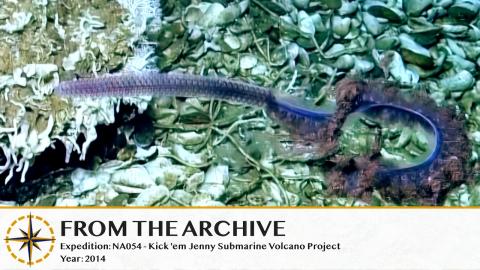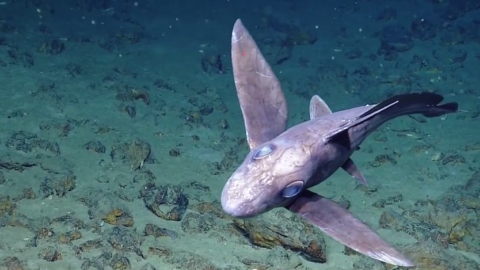The Future of Science: Exploring with Remote Telepresence

Dr. Ballard, Founder and President of the Ocean Exploration Trust, has been using telepresence to revolutionize science for decades. It’s the same technology we use to bring you all of the amazing ocean videos you can see on our homepage and that are live streaming in museums, aquaria, schools, and universities around the world. This technology is not just used by the public - scientists join our expedition from home, identifying sea creatures, pointing out interesting finds, helping us with archeological studies, and more. We’ve even made discoveries based on viewer input. While we were exploring an unknown shipwreck in 2015, it was one of our viewers that first identified the class of vessel leading to our eventual discovery that the target was the USS Peterson.
Telepresence enables us to utilize the expertise of scientists, engineers and data loggers on shore. Why put scientists on shore? Bunk space is valuable on Nautilus - 48 beds seem like a lot, but they fill up quickly with our crew, the operations team, interns, and Science Communication Fellows. Telepresence frees us from the space constraints of the ship, allowing more scientists to be involved with the expedition and effectively increasing the knowledge base and expertise that informs our decisions on the ship as we explore.
So how does telepresence work? Our video streams from the cameras on Hercules and Argus up our fiber-optic cable to the control van on Nautilus, where it is sent via from our dish to a satellite down to a receiving station, then on to the Inner Space Center. From here, it is distributed directly to scientist’s computers and to the web.
We’ve been changing the way ocean science has been done for years, make sure you tune into our live stream to experience it all with us.

Kick 'em Jenny Submarine Volcano Project
This cruise to the southern Lesser Antilles volcanic arc is part of the INSPIRE project, funded by NSF with the purpose of studying and improving telepresence for ocean exploration. Scientists will implement several student-designed exploration projects led from shore. Kick’em Jenny is the most active submarine volcano in the Caribbean Sea, and during the past century it has shown a history of progressive growth with explosive eruptions.



